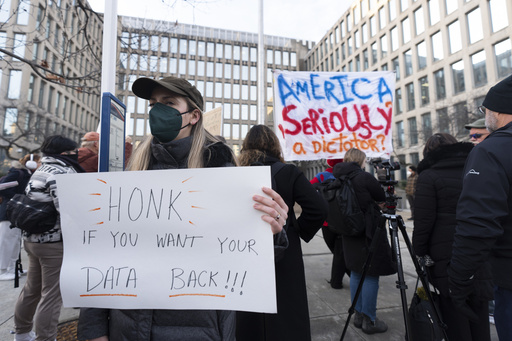Since taking office for his second term last month, President Donald Trump has placed a strong emphasis on significantly downsizing the federal workforce at an accelerated rate.
His administration is pursuing various methods, including dissolving the U.S. Agency for International Development and implementing a mass deferred resignation plan. Through executive orders and memos, the GOP-led government aims to transform the structure and size of federal employment, as well as the locations where employees carry out their duties.
However, many of these directives have encountered legal challenges, leaving a number of federal workers uncertain about their positions and the deferred resignation plan, often referred to as a buyout.
This article provides important insights into the federal workforce, the protections surrounding federal employment, and the procedures involved in reducing the employee count.
The civilian federal workforce, excluding military members and postal employees, includes approximately 2.4 million individuals.
While around 20% of these workers are concentrated in Washington, D.C., alongside Maryland and Virginia, over 80% are located across the rest of the country.
When distinguishing between civil servants and political appointees, it is critical to note that civil servants constitute the majority of the federal workforce.
Typically, these employees go through a formal application process and enjoy strong job security once employed. Conversely, political appointees – who number around 4,000 – are appointed at the president’s discretion and can be terminated at any time.
“Civil servants often have lifelong careers, some for decades,” noted an expert who has experience in federal employment during a period of significant reductions in government positions under President Bill Clinton.
The process for dismissing federal workers is complicated, particularly because most enjoy robust job security rooted in extensive legal frameworks.
Non-political employees benefit from substantial protections intended to prevent arbitrary dismissals based on political considerations. Over time, these protections have been established and reinforced by both major political parties.
As one expert pointed out, “The president definitely has a difficult task ahead.” Federal workers have the right to due process, enabling them to challenge disciplinary decisions through formal proceedings.
They must be informed of any allegations and given the chance to respond and present their defense.
“To fire someone, you must compile a comprehensive record, which doesn’t occur frequently,” the expert added.
The establishment of protections for federal employees arose as a necessary reform to address the chaos caused by the 19th-century spoils system, where jobs were handed to political allies.
Such practices led to incompetence, corruption, and excessive turnover with each new administration, disrupting continuity and specialized knowledge.
The assassination of President James Garfield in 1881 by a man seeking a job appointment prompted the passage of the Pendleton Civil Service Act in 1883, which established a merit-based hiring framework.
The Civil Service Reform Act of 1978 further solidified the merit system, ensuring that most federal workers could only be terminated for legitimate reasons.
“The goal is to retain qualified individuals; if jobs are volatile with new administrations, talented individuals may avoid government service,” a law professor remarked.
Currently, efforts to drastically cut the federal workforce under Trump are unprecedented in U.S. history, according to the head of a nonpartisan organization focused on enhancing government operations.
“There has been nothing similar in our past,” the organization’s president stated.
Regarding union representation, federal employees are entitled to union support; however, unlike many private sector unions, federal unions cannot strike.
Additionally, they are prohibited from negotiating salaries, which are established by law.
Federal unions are able to negotiate over workplace conditions and protections for their members, focusing particularly on remote working scenarios, an area where they have had previous success, now facing potential cuts from the current administration.
“There are limitations on their bargaining power,” an administrative law authority explained. “They can’t negotiate over agency policies; that falls under political decision-making.”
New federal employees typically undergo a probation period lasting from one to two years, during which supervisors assess their performance.
During this initial phase, workers can be let go with relative ease if they do not meet expectations. Upon successful completion, they can be transitioned into full-time roles featuring job protections.
Probationary employees lack some appeal rights, making dismissal simpler during this timeframe.
Public opinion regarding the reduction of the federal workforce reveals a significant degree of opposition.
A recent survey conducted in January indicated that many Americans were against workforce downsizing, whether through job cuts or the elimination of entire agencies, with a considerable portion of respondents remaining undecided.
Approximately 30% of adults expressed support for cutting a large number of federal jobs, while 40% opposed such actions, and another 30% maintained a neutral stance.
The data revealed that public opposition to cutting entire agencies was notably stronger than support, with only one-quarter backing such eliminations, while half the population opposed them and about 30% were uncertain.




